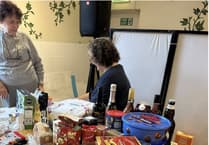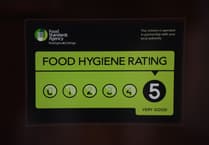Multi-million-pound investment plans to revolutionise the way people get around Bath and North East Somerset are to be considered by cabinet.
The detailed proposals for investing in sustainable transport improvements follow a successful bid, led by the sub-region’s transport authority the West of England Combined Authority (WECA), to the government’s City Region Sustainable Transport Settlement (CRSTS) fund.
WECA secured an unprecedented £540m for the sub-region, but to unlock the Government funding it must now submit a list of areas that will receive it.
Bath & North East Somerset Cabinet is being asked to approve £129.39m of local transport schemes to be funded from the CRSTS money, matched by a £17.2m local contribution funded by the Council, at a special meeting this Thursday, 27th January. WECA’s Joint Committee meeting the following day will seek final approval for the WECA-wide package of schemes, ahead of submission to the Government.
Councillor Sarah Warren, Deputy Leader and cabinet member for Climate and Sustainable Travel, said: “We are committed to decarbonising transport, reduce car use, tackle congestion, improve air quality and create healthier places across B&NES.
“This game-changing investment means we can now put in place real and practical improvements to how people get around our area, particularly by bus, bike or by walking.”
The Cabinet is being asked to approve the following areas for funding:
• Improvements to public transport and cycling and walking infrastructure on the A4 corridor from Bath to Bristol, including upgrading the Bristol to Bath Railway Path, creating a new transport hub at Hicks Gate and improving cycling and walking connections in and around
Keynsham and Saltford.
• Improvements to public transport and walking,
cycling and the public realm on the A37 corridor between the Somer Valley and Bristol and the A367 corridor between the Somer Valley and Bath.
• Improvements to public transport, walking and cycling infrastructure in Bath city centre to support delivery of the Council’s improvement plans for Bath Quays and Milsom Quarter. This would include the prioritisation of buses to improve journey times.
• Walking and cycling improvements in Midsomer Norton and Bath, identified through the Local Cycling and Walking Investment Plan. This would include in Bath: segregated cycleways and new upgraded controlled crossings would be installed in Lower Weston to improve routes between the city centre and Oldfield School and a new scheme would be developed to connect secondary schools in the south of the city and the University.
Midsomer Norton would see improvements to pedestrian routes between the High Street, Norton Hill School and Fosseway via Charlton Road and the provision of the missing section of the off-road route between the proposed Silver Street housing development and Charlton Road.
• Further investment in Liveable Neighbourhoods. The Council is currently working with fifteen local communities on the first phase of its Liveable Neighbourhoods programme.
If the report is approved the detailed design of specific schemes will be developed following consultation with residents and businesses. The report also identifies that some funding would be used for highways maintenance. Cllr Warren added: “With transport accounting for 29% of the district’s carbon emissions we need bold new thinking on transport if we are to meet our 2030 net zero ambition. It is vital that we work across the WECA area to provide seamless, integrated travel so residents can leave home, safely cycle or walk to their local bus stop, hop on a reliable, quick bus and then transfer to a train if they need to – only buying one ticket for the entire journey. So, I particularly welcome the work that WECA will be leading to introduce a common brand and integrated smart ticketing across the transport network.”
In addition to the improvements identified for CRSTS funding, the Council is also currently asking for views on the new transport schemes that will be needed to meet its goal of carbon neutrality by 2030. Some of the ideas set out in the Journey to Net Zero document include removing through-traffic from Bath city centre, a new mass transit system and mobility hubs.
Cllr Shaun Hughes, (Independent, Midsomer Norton North), told The Journal: “For more than two years I have been pushing my proposal of a Midsomer Norton Park & Ride to provide a connection between our cycleways and direct transport hub to Bath, so I’m delighted to see the Lib Dems have finally announced they are now considering “mobility hubs” to help people in rural communities cycle and walk to direct, convenient bus services into Bath. Personally I don’t care what they call it or who takes credit for it, as long as it happens.
“The disused site for sale along the Radstock Road seems to be the most suitable option due to its size, location and connection with our cycleways to Midsomer Norton, Radstock and Westfield, this could also provide car share and school pick up and
drop-off points.
“We all understand how important it is to tackle the climate emergency and create the right transport infrastructure, however, we should also be mindful that due to years of underinvestment in our area, currently the car is the only viable form of transport for large parts of our community.”





Comments
This article has no comments yet. Be the first to leave a comment.